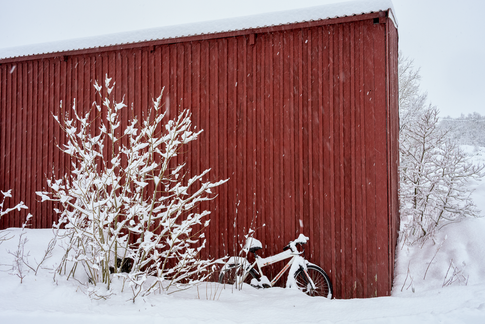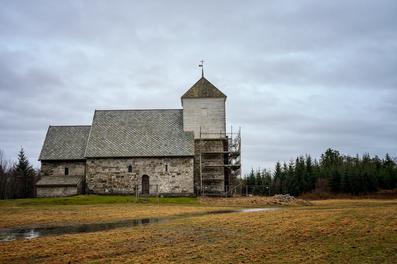Lødingen & Rørvik, Norway: February 5 & 6, 2025
- Cecilia Clark
- Mar 17
- 3 min read

As the ship headed toward Lødingen for the noon arrival, the skies were very gray and it was soon snowing. Once docked, conveniently, the snow lessened and stopped. Lødingen is on the southeastern corner of the island of Hinnoya. Its climate is classified as "continental subarctic climate." It was cold.
We were in port just 3 hours--just enough time to walk almost to the town center and back. We had hoped to walk to the lighthouse (last photo above), but didn't get there.
We didn't go very far. Lødingen hosts several annual bicycle races and its nickname is "Bike Town." There are also hiking trails.
On the way back to the ship around 2:00 pm, the sky lit up as the setting sun peaked through the gray clouds. It was a remarkable difference.
Lødingen is a busy ferry harbor. The last photo is of the Rotvær Lighthouse. The first lighthouse, 12 m/39 ft tall, was lit in 1914. In 1985, the old lighthouse was closed and a new automated, electric fiberglass light was installed near the old tower. The light sits at an elevation of 21.5 m (71 ft) above sea level on the east end of the island of Fugløya, part of a dangerous reef (Wikipedia).
The next day, February 6, we arrived in Rørvik at 12:00 noon. We were in port four hours time enough for the Nærøya - the Island of the Gods excursion. We had a delightful, animated guide who made this excursion quite enjoyable. We took a boat a small distance to Nærøya formerly known as Njord's island. A sign at the boat dock says
"You have come by sea to Njord's island, like generations before you who came here to worship their god [Njord], pay their tithes or trade at the Nærøy Fair. Its location right on the main shipping route, beside the stretch of sea known as Folla, is probably the reason why Nærøya was a religious centre for 1,500 years - first associated with worship of the pagan God Njord, latterly with the Christian faith."
Today, the island is occupied by the caretaker and a flock of sheep and is a cultural heritage site. The medieval stone church on Nærøya was built shortly after the introduction of Christianity in Norway (12th century). It signaled a transition to a new religion and a new mindset. Unfortunately, in the church's lifespan there have been three fires. The last one, in 1847, left only the stone walls. In the 1950s community volunteers put a new roof on it, but it is in need of major restoration work. While some graves were relocated to a different island/church, many remain. Inside the church our guide mesmerized us with stories of troll interference during the initial building phase in the 12th century.
Hanging in the nave of the church was a model ship. Our guide referred to the nave as the "ship." Dating from the Middle Ages, votive ships were once common in the churches of seafaring peoples. Some votive ships commemorate loved ones lost at sea, or they can also signify the church as a refuge from life's storms. As a donation to the church, it is an offering given for the protection of loved ones.
Our guide wore clothing and jewelry copied in the style of Viking-era grave goods. In the photo below she is telling a story about a Troll who lost a bet with the minister who was building the first church. She reached into the spring and pulled out the Troll's stone heart. The stone was passed around so we could each make a wish. So far, my wish hasn't come true.
After our time visiting the very cold church, we were invited into an event space where the caretaker cooked us pancakes and served us hot drinks. Both were a hit and warmed our stomachs and limbs.
Leaving the island of Nærøy, the boat driver stopped suddenly because we were surrounded by a pod of porpoises. They looked like miniature orcas. We watched them play for a while. That was thrilling, but it was not my wish.
We made it back to the ship just five minutes before the gangway was picked up.
Next stop: Molde at 8:00 am













































コメント